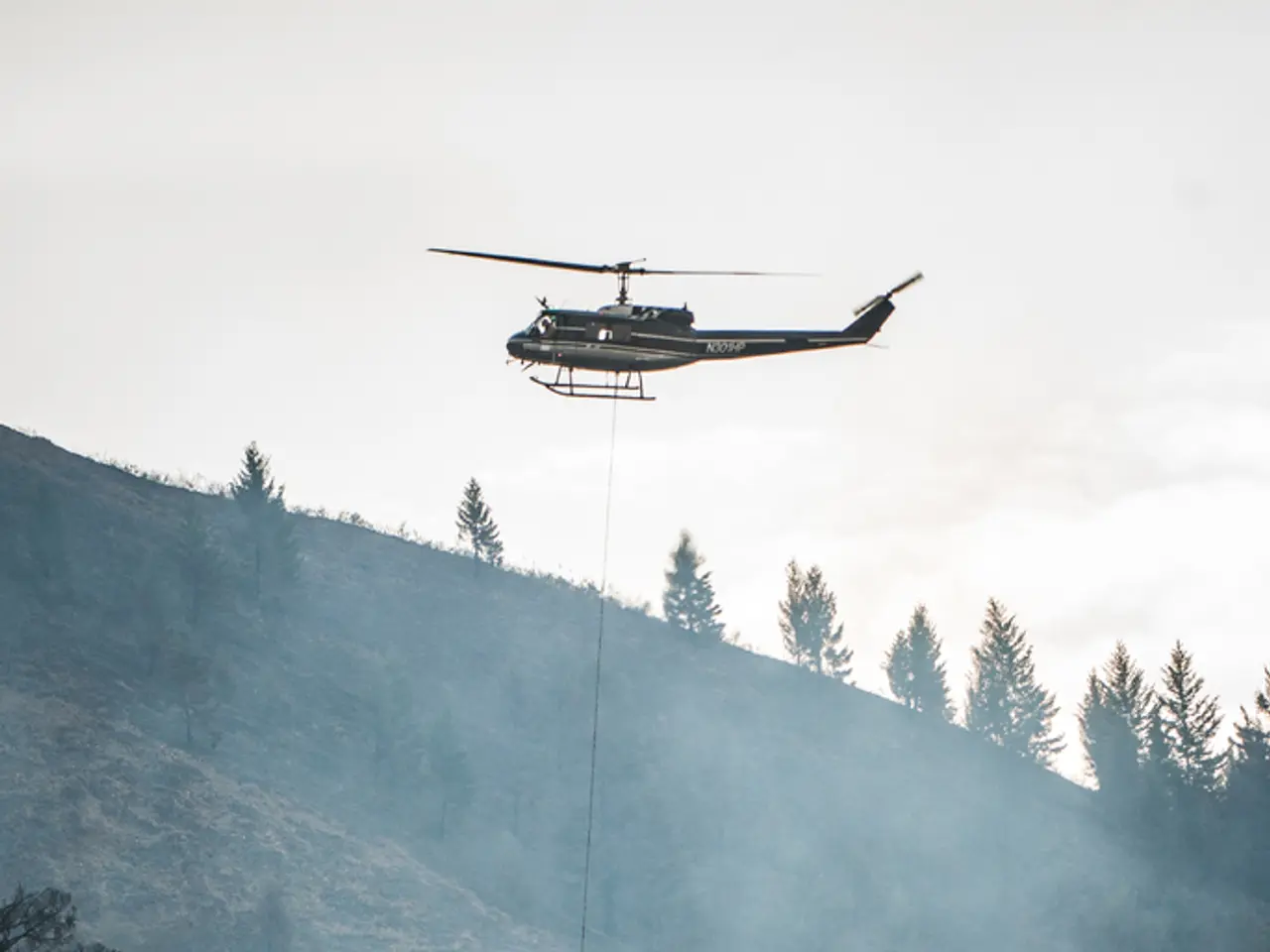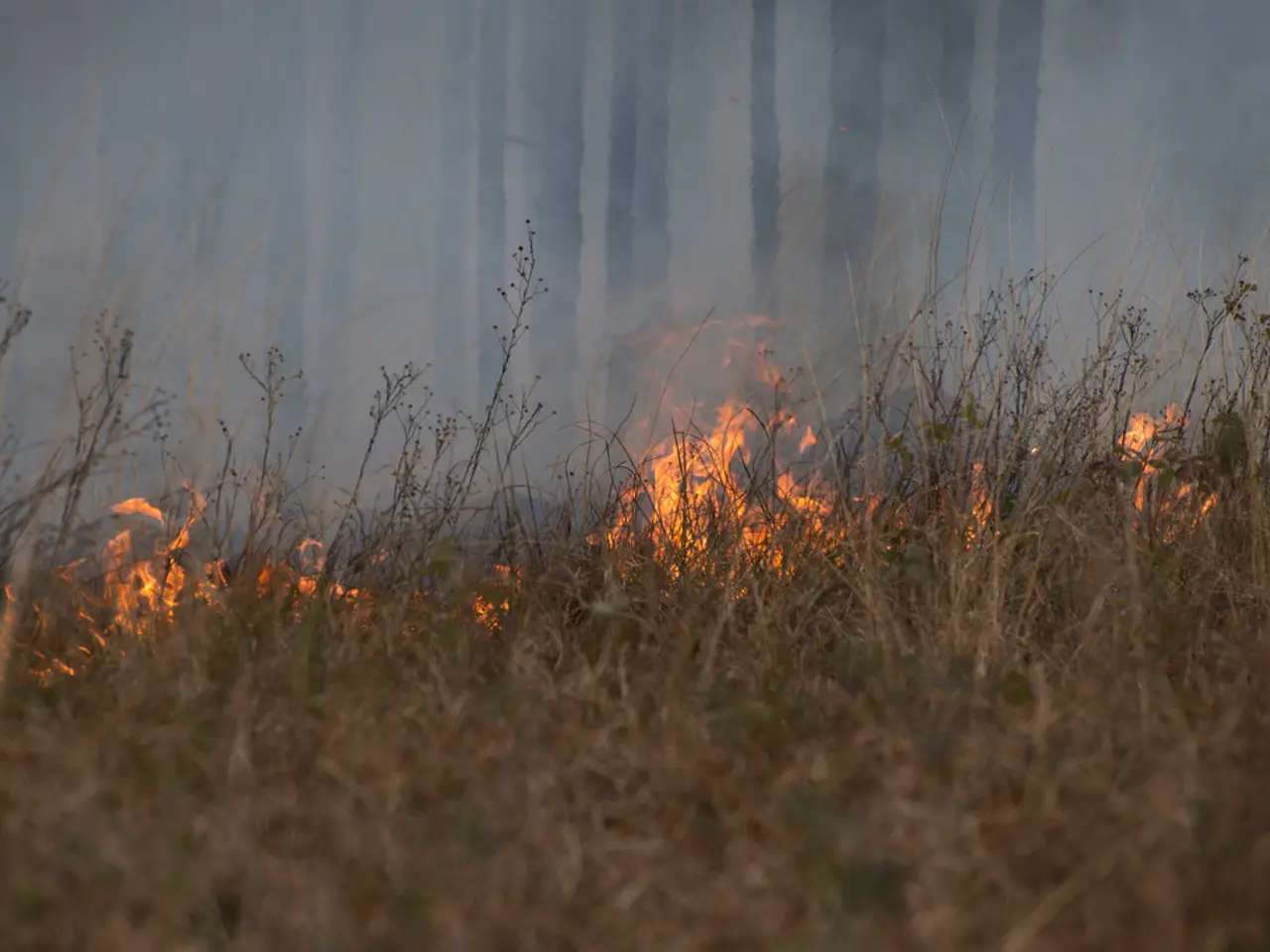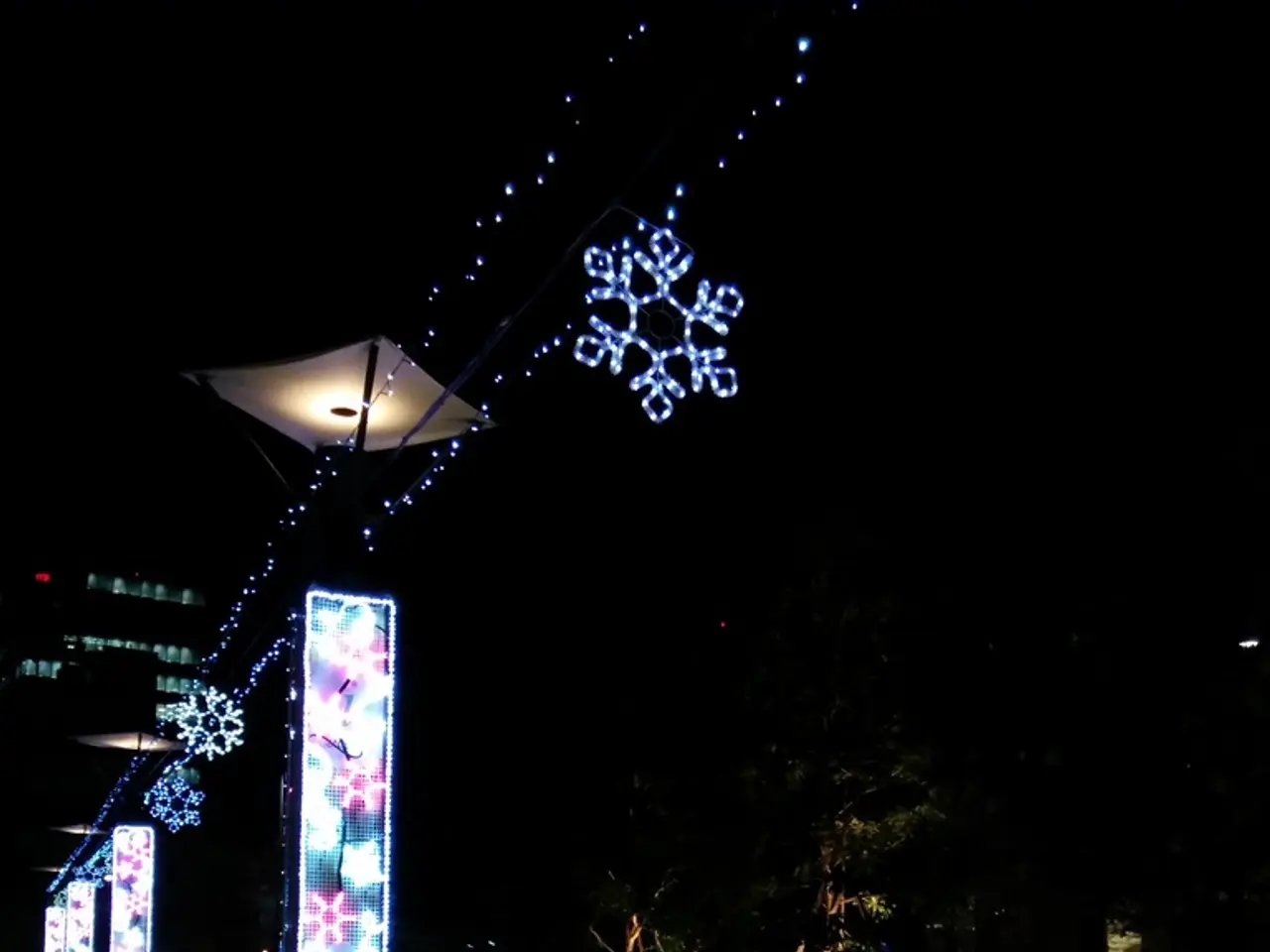Helicopters employed for evacuation of mountain huts following Tyrolean storms
In the picturesque Tyrolean mountains near the municipality of Gschnitz, Austria, a significant evacuation operation is underway following a mudslide caused by severe thunderstorms on July 1, 2025[1][2][3]. The mudslides have covered homes, mountain huts, and made many roads and hiking trails inaccessible, particularly affecting the Bremerhütte, Innsbruckerhütte, and Tribulaunhütte mountain huts[1][2].
The mudslides occurred around 6 p.m., causing the Gschnitzbach creek to burst its banks and flood parts of the village[1][2][3]. Fortunately, no injuries have been reported, but there has been considerable damage, including the destruction of an open-air museum focused on watermills[1][3]. Residents were advised to remain indoors, avoid basements and underground garages, and stay clear of dams on creeks while awaiting evacuation[1][2].
Elmar Rizzoli, Tyrol's crisis manager, confirmed the evacuation efforts to ORF broadcaster[2]. Initially, authorities announced that 100 people would be evacuated, but this number was revised as a descent from one of the affected huts was found to be possible, resulting in a lower number of evacuees[2]. As of the current information, the status of the evacuated people from Gschnitz is not known[2].
The Austrian Armed Forces facilitated evacuations using Black Hawk helicopters due to the inaccessibility caused by debris from the mudslides[1][3]. The descent on foot from the affected mountain huts was deemed too unsafe[2]. The municipalities of Neustift im Stubaital and the district of Landeck were also affected by landslides, although no specific evacuation figures have been released[2].
This event is part of a pattern of recent Alpine landslide-related evacuations, such as the May evacuation in nearby Switzerland[1][2]. Authorities, including the Tyrol Center for Crisis and Disaster Management and local emergency organizations, are closely monitoring the situation[1][2].
| Aspect | Current Status | |-----------------------------|--------------------------------------------| | Evacuations | ~100 people evacuated by helicopter (revised) | | Cause | Severe thunderstorms triggering mudslides | | Impact | Homes, mountain huts, roads, hiking trails covered or inaccessible | | Specific huts affected | Bremerhütte, Innsbruckerhütte, Tribulaunhütte | | Flooding | Gschnitzbach creek burst its banks | | Injuries | None reported | | Damage | Significant, including an open-air museum destroyed | | Safety advice for residents | Stay indoors, avoid basements/garages, stay away from dams | | Monitoring | Ongoing by Tyrol crisis center and emergency services |
[1] ORF (Austrian Broadcasting Corporation). (2025). Mudslide in Tyrolean mountains: Dozens evacuated due to severe storm. [online] Available at: https://www.orf.at/news/stories/3088740/
[2] KNA (Austrian News Agency). (2025). Mass evacuation in Tyrolean mountains due to mudslide triggered by severe storm. [online] Available at: https://www.kna-ap.at/AP/de/news/region/tirol/story/20250702135518/mass-evakuierung-in-tiroler-alpen-due-zu-schlammschlag-ausgeloest-von-sturmschweif
[3] Tiroler Tageszeitung. (2025). Storm in Tyrolean mountains: Mudslide covers Gschnitz. [online] Available at: https://www.tt.at/tirol/nachrichten/wetter-in-tirol-schlammschlag-gschnitz-10442440
More environmental-science research is needed to predict future weather patterns that may lead to such disastrous events as the mudslides in the Tyrolean mountains. In the aftermath of this incident, authorities are investing in science to make infrastructure less susceptible to environmental changes.








